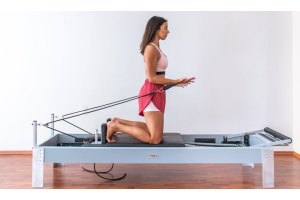How a treadmill can help you run faster

How a treadmill can help you run faster?
Can a treadmill help you run faster?
Whether you’re competing professionally or just enjoy getting those PBs, if you want to know whether a treadmill can help you run faster, we’ve got you covered in this guide.
Treadmill vs road running - which is faster?
Your running terrain can make a difference. Running on a traditional treadmill is easier than running on the ground. The motion of the belt can give you a leg-up when it comes to putting one foot in front of the other. There is also a bit more give in the surface of a treadmill compared with the road. Many treadmills have inbuilt shock absorption systems, making your run feel more comfortable while also reducing the risk of injury.
You may have already found that your pace doesn’t match up when comparing running on the road to running on a treadmill. However, if you’ve only been doing one type of running, you won’t necessarily be aware of the difference.
Treadmill running is at its most useful for running faster. You have control over the pace and intensity of your workout. You can run fast for short bursts, also known as sprints. By setting the incline, you can increase the intensity. However, this won’t necessarily help you run faster, as there will be more resistance and your legs will need to work harder. What it will do is strengthen the muscles in your legs. The best part? Strong legs help you run faster!
Running on the road is better for soft tissue conditioning. This is important because it helps optimise your muscle functioning and mobility.
What other factors can help you run faster?
Some people seem to have a natural affinity for running. Genetics can play a part after all. But what about other factors? The point is to keep improving your performance, rather than comparing yourself to the people at the front of the race!
Acclimatising
Let’s say you regularly run 5K. You could run that little bit further in your training sessions. That way, you will become more acclimatised. That 5K that used to seem like climbing a mountain will now feel more like a hill - eventually, it could feel like a walk in the park.
Don’t skip leg day!
The gym is your greatest ally when it comes to strengthening the muscles in your legs. It could help to get a personal trainer on board, as they can introduce you to new exercises and ensure you don’t plateau. Going out of your comfort zone now and then can work wonders, particularly when it comes to strength and resistance training.
Your shoes
It’s worth investing in running shoes. They will be designed to support your feet and can help you run that little bit faster! If you plan to run longer distances, it may be worth visiting a specialist running shop where you can have your gait analysed. Many stores will film you walking and running on a treadmill and then choose the best trainers for your running style. This will reduce the risk of injury and improve your speed and recovery.
Nutrition
If you’re running 5K or less, you don’t necessarily need much food to power through. In fact, eating too much before a run can weaken your performance. You’re more likely to feel bloated or get cramps, which is uncomfortable and can mean you need to stop at intervals. Eating a protein bar or some fruit will more than suffice.
Staying hydrated is also important, although you won’t want to glug down a whole bottle of water before a cardio workout!
Age
Not to sound defeatist, but some research shows that the optimal age for running is between 20-30.
Studies show that as we age, we lose muscle mass, and the connective tissue between the joints loses some of its elasticity. These factors combined mean that injuries are more likely to occur and that the recovery time will be slightly longer. That being said, if you put a little more time into your resistance training, there’s no saying that you can’t up your game, even if you are a little older.
Weight
The heavier you are, the more weight you have to carry. That means your body has to work harder. Many of the top runners are very lean and slender, and that’s probably not a coincidence. It could be worth losing some weight if you’re a little overweight, but only if that’s a healthy option and something you want to do.
What should your training plan look like?
A well-rounded, consistent training plan can really help. You may struggle to get faster with sporadic training. It’s something that you need to build on. Sure, we all have good days when we feel on top of the world and like we can run for miles at a consistent pace. But if you’re in it to win it, you’ll want to keep the training consistent.
You should set aside two to three days each week, mixing up shorter and longer distances. You can also mix up the intensity of your workouts and keep track of your running speed. 2-4 mph is considered low intensity. When you’re ready, you can up the intensity to 6mph. For beginners, running at 30 minute intervals is a good place to start.
A little patience can go a long way. You won’t peak on day one. It takes time. You may have some setbacks or off days too. What matters is that you show up for training.
Ready to up your running game?
Have a look at our impressive selection of treadmills for sale at Gymkit UK. We stock top models and brands, including BH Fitness and Star Trac.




